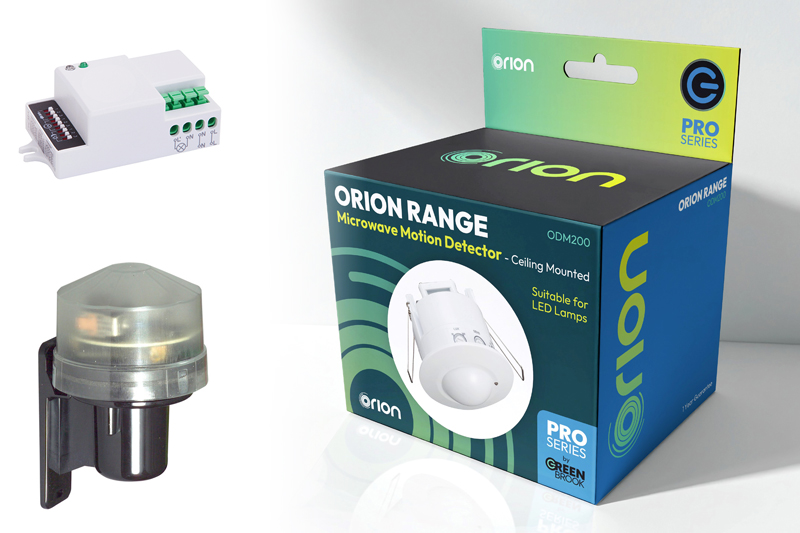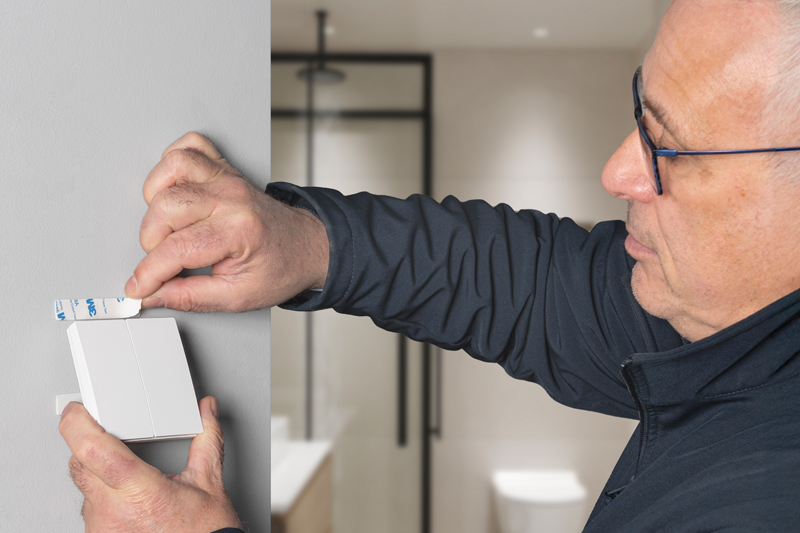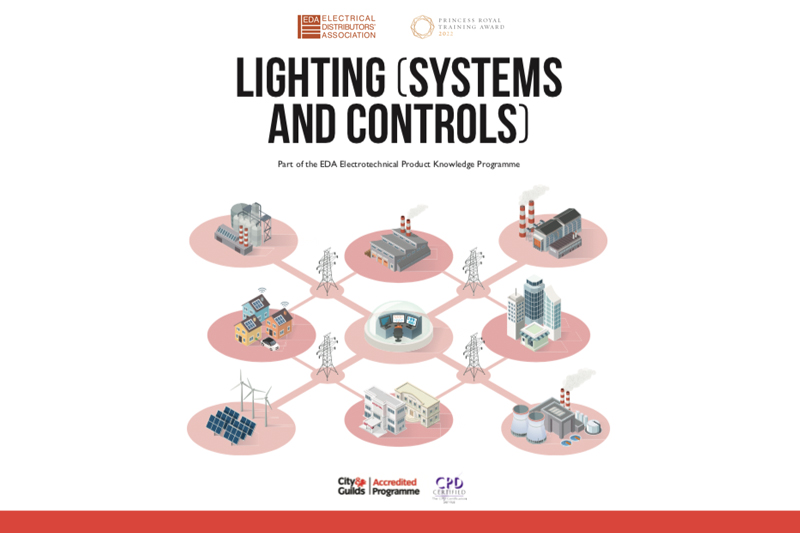Jill Richmond, Project Manager at GreenBrook Electrical, looks at how to use occupancy detectors and lighting controls to reduce energy consumption.
In today’s world, where energy efficiency has become both an environmental necessity and an economic priority, building owners, facility managers, and homeowners are seeking innovative ways to reduce wasted power. One of the most effective yet often overlooked strategies is the implementation of occupancy detectors and advanced lighting controls. These technologies ensure that lighting systems deliver illumination only when and where it is needed, thereby reducing unnecessary energy consumption and cutting costs without compromising comfort or safety.
This article explores how occupancy detectors and lighting controls work, the wide range of benefits they provide, and why they represent an essential component of any modern energy management strategy and building specification.
Understanding
Occupancy detectors are devices that automatically turn lights on or off depending on whether a space is occupied. They typically use sensors, such as:
- Passive infrared (PIR): Detects movement based on body heat
- Microwave Technology: Uses microwaves to detect motion
- Dual-technology: Combines both for greater accuracy
By ensuring lights are only active when people are present, occupancy detectors eliminate the common problem of lights being left on in empty rooms.
Lighting controls refer more broadly to systems that manage lighting based on various factors, including occupancy, daylight availability, schedules, or user preferences. These may include:
- Time-based scheduling systems that turn lights on or off at predetermined times
- Photocells that dim or switch off lights when sufficient natural light is available
- Dimming controls that allow lighting levels to adjust dynamically for tasks or ambiance
When used together, occupancy detectors and lighting controls create a smart ecosystem that aligns energy use with real-time needs.
Reducing energy waste
One of the most direct benefits of these systems is the reduction in wasted electricity. Studies consistently show that a significant portion of lighting energy is consumed unnecessarily because lights are left on in unoccupied spaces.
For example:
- In offices, lights in conference rooms or restrooms are often left on for hours even when no one is inside
- In schools, classrooms may remain illuminated during lunch breaks or after school hours
- In residential buildings, hallways and other communal areas can waste energy when residents forget to switch lights off
Occupancy detectors address this issue automatically. When no movement is detected after a set period, the system turns off the lights. This ensures that energy is only used when it provides value, eliminating the human error of forgetting to flip a switch.
Cost savings
Energy waste translates directly into higher electricity bills. By cutting unnecessary usage, lighting controls deliver measurable financial savings.
- Commercial buildings: Studies suggest occupancy sensors can reduce lighting energy consumption by 30–60%, depending on the type of building and usage pattern
- Residential settings: Homeowners can see reductions in utility bills by installing occupancy detectors in high traffic but irregularly used areas such as bathrooms, and garages
- Large campuses or institutions: Schools, hospitals, and government facilities can save thousands annually by adopting automated lighting controls across multiple spaces
Although there is an upfront cost for installing sensors and control systems, the payback period is often short, sometimes less than two years, due to the substantial energy savings.
In offices, improved lighting quality has been linked to better concentration and fewer headaches, while in homes, adaptive lighting enhances relaxation and supports healthy circadian rhythms.
Extended lifespan
Another indirect but valuable benefit of occupancy detectors and lighting controls is that they extend the lifespan of lamps and fixtures. Every hour a light is turned off instead of left running unnecessarily contributes to a longer service life.
This is especially important with LED technology. While LEDs are highly efficient, they do experience gradual degradation with use. Reducing operational hours not only saves electricity but also delays replacement costs. This reduces both maintenance expenses and the environmental burden of disposing of used components.
Safety and security
Beyond efficiency, occupancy detectors can enhance safety and security.
- Safe passage: In stairwells, corridors, and parking garages, automatic lighting ensures that people are never left in the dark, reducing risks of accidents.
- Security presence: Exterior lighting with motion sensors can deter intruders by making it appear that someone is nearby. Unlike constant illumination, which wastes energy, motion-activated lights only engage when activity is detected.
This dual benefit – energy savings plus safety enhancement – makes occupancy detection especially valuable in public facilities and multi-residential buildings.
Supporting sustainability goals
Organisations and households are increasingly seeking ways to align their operations with sustainability goals. Reducing lighting energy consumption through smart controls contributes directly to:
- Lower greenhouse gas emissions: Since much of the world’s electricity is still generated from fossil fuels, reducing demand directly reduces carbon output
- Compliance with building codes and certifications: Many green building standards encourage or even require the use of lighting controls. Implementing these technologies can improve a building’s certification level
- Corporate responsibility: For businesses, showcasing energy-efficient practices strengthens their reputation with environmentally conscious stakeholders
Flexibility for the future
As buildings become smarter and more connected, lighting controls serve as a foundation for broader automation strategies. Modern systems often integrate with building management systems (BMS) or smart home platforms, allowing users to monitor and adjust lighting remotely via apps or dashboards.
This flexibility makes it easy to adapt to changing needs:
- In offices, schedules can be adjusted as work patterns evolve
- In schools, holiday schedules can be programmed in advance
- In homes, lights can be controlled remotely for convenience or security while away
The scalability and adaptability of these systems ensure that they remain relevant investments even as technologies evolve.
Overcoming common concerns
Some building owners hesitate to adopt occupancy detectors or lighting controls due to concerns about cost, however prices for sensors and controls have dropped significantly in recent years, making them accessible even for small-scale applications.
When properly designed and installed, these systems are unobtrusive and highly effective, delivering both energy and non-energy benefits.
Conclusion
Occupancy detectors and lighting controls represent a simple yet powerful solution to the persistent problem of wasted energy in buildings. By ensuring lights operate only when necessary and at appropriate levels, these technologies cut electricity use, lower costs, extend equipment life, and improve occupant comfort and safety.
For businesses, schools, healthcare facilities, and homeowners alike, investing in these systems is not just a cost-saving measure but a step toward greater sustainability and smarter building management. As energy efficiency continues to rise in importance globally, occupancy detectors and lighting controls stand out as practical, proven tools for creating a brighter, greener future.
For additional information, click here
Find more industry features here





